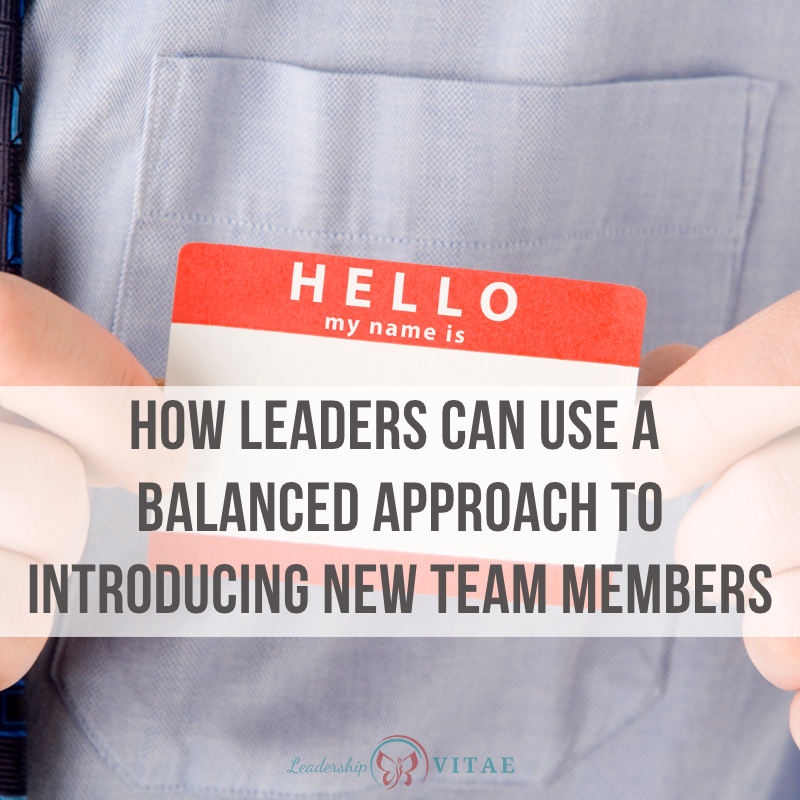
In a prior role, I was so excited to join, I was practically bouncing out of my seat. That excitement quickly turned to chagrin and embarrassment in the first few weeks.
It was unfortunate and preventable. My new manager was warm and inviting. He was a big part of why I took the job. As someone passionate about coaching and leadership, I found a kindred spirit that I was thrilled to work for.
Except for when he’d introduce me to new people.
While I appreciated his enthusiasm for what I brought to the team and organization, every introduction felt over the top. Even as someone with a solid appreciation for my knowledge and skills, I’d find myself wanting him to tone it down.
The biggest issue I had wasn’t about me. Instead, I found myself overwhelmed with empathy for everyone else in the room. I was the newbie and it sounded like I walked on water and had endless value I could bring to the team. What about everyone else?
Crickets.
Welcoming a new hire
The last time you started at a new company or team, how did you feel? Likely a bit of mixed feelings. There’s often excitement about a new role, thinking about the opportunity it represents like a cool project to work on. At the same time, there may be a bit of anxiety about meeting new people, figuring out how to navigate the company politics, and picking up on team norms.
How we welcome a new team member can make the difference in whether the excitement or anxiety is dominant. In the best teams, where I’ve felt the most welcome, there’s been an opportunity to introduce myself and meet team members in a small setting. Maybe share a little about myself personally and professionally, and learn some of the same from others.
The ideal welcome results in smiles and creates an opportunity for further connection. That’s the key to a successful welcome – it’s bidirectional.
A group welcome
In my latest role, there were a LOT of introductions. Many of us were starting on the same day and the team was reorganizing to account for massive growth. So not only did we have to worry about onboarding new leaders and team members, but existing teams were shuffled and many folks were no longer working together every day.
Awesome. Not only were peers and team members meeting me for the first time, but my team was also new to each other. That’s a lot of change in a short amount of time.
In each setting, we took the time to learn about everyone – new and old alike. We heard a little bit about professional backgrounds, like how long they’d been in the company or role, but a lot about folks as humans. We heard about kids, pets, favorite music or travel destinations.
When my leader did take an opportunity to introduce me, such as to my peers, he kept it light. He framed up a few key points of what he thought I’d bring the organization. A few seconds of support and then let all of us introduce ourselves. It wasn’t too much or too little. It felt just right.
The private welcome
In addition to the various team introductions, my manager did something I appreciated and will model in the future. He gave me a private welcome that set the stage for the kind of energy and leadership I’d bring to the role.
First, he let me know exactly why he hired me. Specific mindset, skills, experience, and/or traits that he felt would be critical to my success in the organization. These were the things I could intentionally lean into as I navigated the coming weeks and months of uncertainty.
Next, he let me know where I’d likely struggle – I don’t have a background in our business area and it’s hugely complex – and the kind of support I’d need and could expect. They were the gotchas for me to look out for. Places where I needed to tread lightly and/or be open to asking for help.
Then came the magic.
He told me about all of my peers and team members. He shared what THEY bring to the organization. The gifts each of them have that I could look to as I navigated a new team, role, organization, and domain.
The beauty of this approach – whether private or public – is that it’s bi-directional. By providing insights into the strengths of my team and my peers, it highlighted opportunities for what I can receive and learn, not just what I’ll give.
The missing piece
In my old role, what was missing in the introductions was the value of the existing team. As a new hire, we might be excited and nervous, but the existing team and peers may be as well. If the only highlights are what the newbie brings, and it’s a plethora of brilliance, it downplays and/or diminishes the value of those who’ve been here.
Folks who we need to stay engaged and delivering.
In other organizations, I’ve seen executives bring in folks they’ve worked with before. In an effort to set them up for success, they talk up the new hires long before they arrive. When the first day comes, it’s even more glowing support. They may mean well – but the potential for resentment is high.
How are the skills and expertise of the new person talked about? Are they supplementing the existing capabilities of the team? What great things are already happening that the new person can learn from the team? Finding opportunities to highlight bi-directional value exchange, and recognize the ability of the existing team, can go a long way to fostering a welcoming environment for the new hire.
Once the new person arrives, ensuring they hear the value of the existing team helps immensely with onboarding. It provides a start to learning how to navigate the environment and who they can look to for support.
The next time we are tempted to show excitement for that great new hire we’ve found, pause. Consider how to best welcome them in a way that makes it easy for others to share in that excitement.









One Response
Thanks for sharing this – I’ve been through something very similar!